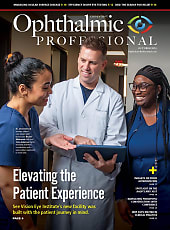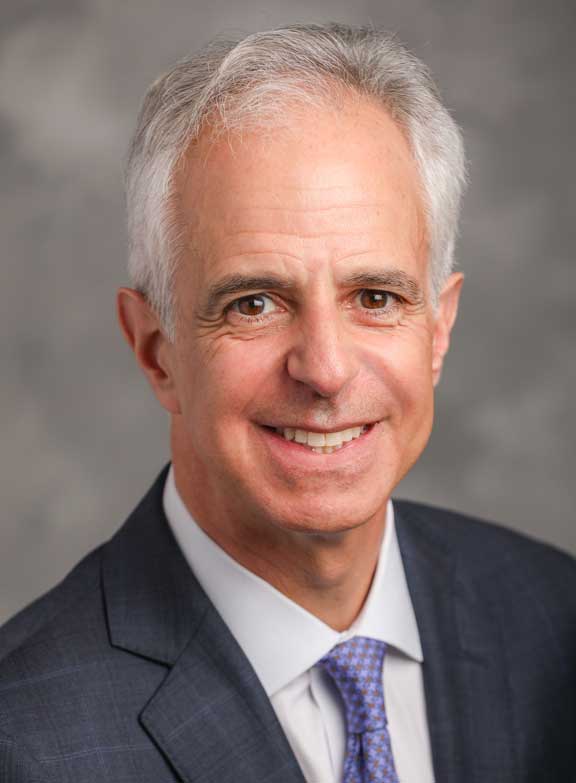Video transcript is below:
Hi, I’m Carl Regillo, MD. I'm the director of the retina service at Wills Eye Hospital in Philadelphia and at Retina World Congress this year I presented data for the first time from the VERONA phase 2 study, and that's the phase 2 clinical trial of EYP-1901 (Duravyu; Eyepoint Pharmaceuticals) compared to aflibercept (Eylea; Regeneron) for diabetic macular edema (DME).
To start, what is EYP-1901? It is vorolanib, a potent tyrosine kinase inhibitor (TKI), an anti-VEGF agent that is combined with a bioerodible polymer called Durasert, injected intravitreally. It's intended to, and has shown, sustained delivery of drug in a zero-order fashion for a period of at least 6 months. It has shown very favorable results in the treatment of neovascular AMD at phase 2 in a large controlled clinical trial and is now in phase 3 testing for neovascular AMD. The VERONA study, which is what I presented, looked specifically at EYP-1901 at similar dose levels for the treatment of center-involved DME.
This was a phase 2 randomized, multicenter controlled trial, basically EYP-1901 in a high or low dose compared to aflibercept. These are eyes that had center-involved DME with some degree of decreased visual acuity. There was a washout period, and then patients were randomized to 1 of 3 arms. All 3 arms received a single injection of standard-dose aflibercept, and then 2 of the 3 got EYP-1901, either low or high dose, 1.3 mg vs 2.7 mg. And then the primary endpoint of this 24-week study was the time to supplemental anti-VEGF injection over the course of that timeframe. And there were protocol prespecified criteria for supplementation, which included changes in both vision or optical coherence tomography (OCT) and a provision for lack of any improvement. So, there was provision for disease worsening or lack of disease improvement per protocol in this trial. The 3 arms were well balanced, with baseline visual acuity about 20/50, as you would expect, and mean central subfield thickness (CST) about 400 µm.
And what did we see? It met its primary endpoint, and that's the results in terms of time to supplement. So a much greater proportion of EYP-1901–treated eyes were supplement free up to week 24, and through week 24. The percentage up to week 24 was 73% in the high-dose arm and 60% in the low-dose arm compared to the aflibercept arm at 50%. So, there's no doubt about it. We have durable, sustained anti-VEGF–like activity. We saw corresponding quick substantial improvement of BCVA from baseline as early as week 4, and well-maintained in both doses of EYP-1901 compared to aflibercept throughout the 6 months, a bit higher with the high dose of EYP-1901. There was some outlier effect when we removed 1 case. We actually saw really impressive 10-line gain in that high dose compared to 3 or 4 letters with aflibercept, ultimately at around 7 letters with some supplementation.
And we saw a corresponding excellent decrease in central subfield thickness, again favoring the high dose, seen as early as 4 weeks and well maintained through the end of study, again favoring the high dose. In this presentation, I also presented how the eyes that were supplemental free performed, so essentially negating the effect of any supplements. And again, we saw excellent disease control with a reduction in CST. It was excellent at the high dose and well maintained throughout the study. And we also showed the proportion of patients who were free of DME at week 24: 40% to 50% in the 2 EYP-1901 arms compared to 0% in the aflibercept arm. And this is the subgroup of patients that were supplemental free.
It's important to comment on safety. The safety profile has always looked excellent with EYP-1901 in several different clinical trials, and it held up again very well here in this DME study.
There were no EYP-1901–related serious adverse events or systemic adverse events, no cases of implant migration or any real problems from the implant or the implant injection. In summary, VERONA was a successful phase 2 study. We saw early clinically meaningful improvements in both vision and OCT in patients with center-involved DME with EYP-1901 injected once over a course of 6 months, and basically superior to a single injection of aflibercept as the control arm, and all this with good safety. We're looking forward to seeing the next step, which is highly likely to be EYP-1901 moving into phase 3 for the treatment at DME. Thank you very much. RP









